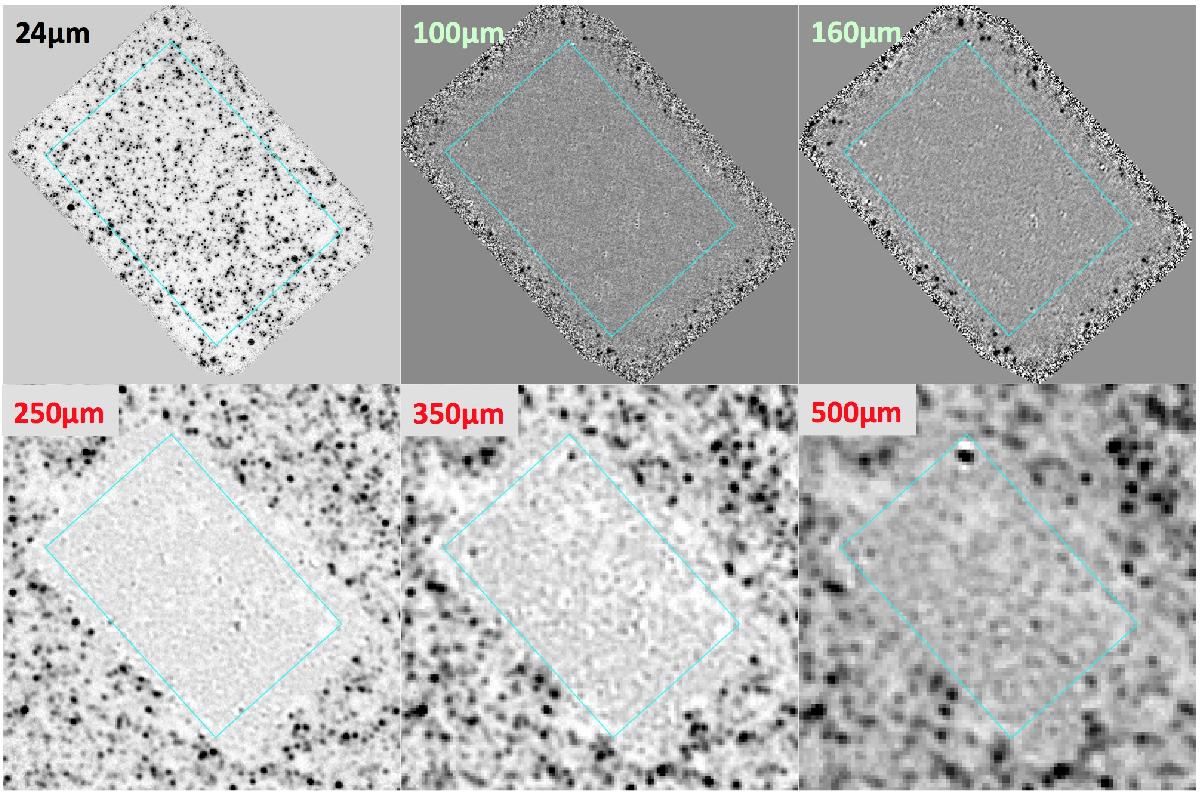We propose a new method of pushing Herschel to its faintest detection limits using universal trends in the redshift evolution of the far infrared over 24 μm colours in the well-sampled GOODS-North field. An extension to other fields with less multi-wavelength information is presented. This method is applied here to raise the contribution of individually detected Herschel sources to the cosmic infrared background (CIRB) by a factor 5 close to its peak at 250 μm and more than 3 in the 350 and 500 μm bands.
We produce realistic mock Herschel images of the deep PACS and SPIRE images of the GOODS–North field from the GOODS-Herschel key program and use them to quantify the confusion noise at the position of individual sources, i.e., estimate a “local confusion noise”. Two methods are used to identify sources with reliable photometric accuracy extracted using 24 μm prior positions. The clean index (CI), previously defined but validated here with simulations, which measures the presence of bright 24 μm neighbours and the photometric accuracy index (PAI) directly extracted from the mock Herschel images.

Residual images in GOODS-North field after source extraction using 24 μm priors in each band. The maps show how efficient is the extraction process in the area covered by the prior catalogue (blue rectangle), showing only very few cases where the remnants of bright sources badly subtracted are still present in the SPIRE residual maps (black spots).
Both methods converge to comparable depths and fractions of the CIRB resolved into sources individually detected with Herschel. After correction for completeness, thanks to our mock Herschel images, individually detected sources make up as much as 54% and 60% of the CIRB in the PACS bands down to 1.1 mJy at 100 μm and 2.2 mJy at 160 μm and 55, 33, and 13% of the CIRB in the SPIRE bands down to 2.5, 5, and 9 mJy at 250 μm, 350 μm, and 500 μm, respectively. The latter depths improve the detection limits of Herschel by factors of 5 at 250 μm, and 3 at 350 μm and 500 μm as compared to the standard confusion limit. Interestingly, the dominant contributors to the CIRB in all Herschel bands appear to be distant siblings of the Milky Way (z ~ 0.96 for λ< 300 μm) with a stellar mass of M⋆ ~ 9 × 1010M⊙.
The full paper can be found in Leiton et al. 2015, A&A, 579, 93
